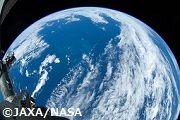| タイトル | A Burke-Schumann Analysis of Dual-Flame Structure Supported by a Burning Droplet |
| 本文(外部サイト) | http://hdl.handle.net/2060/20170000666 |
| 著者(英) | Nayagam, V.; Dietrich, D.; Williams, F. A. |
| 著者所属(英) | NASA Glenn Research Center |
| 発行日 | 2016-05-15 |
| 言語 | eng |
| 内容記述 | Droplet combustion experiments carried out onboard the International Space Station (ISS), using pure fuels and fuel mixtures, have shown that quasi-steady burning can be sustained by a non-traditional flame configuration, namely a "cool flame" burning in the "partial-burning" regime where both fuel and oxygen leak through the low-temperature controlled flame-sheet. Recent experiments involving large, bi-component fuel (n-decane and hexanol, 50/50 by volume) droplets at elevated pressures show that the visible, hot flame becomes extremely weak while the burning rate remains relatively high, suggesting the possibility of simultaneous presence of "cool" and "hot" flames of roughly equal importance. The radiant output from these bi-component droplets is relatively high and cannot be accounted for only by the presence of a visible hot-flame. In this analysis we explore the theoretical possibility of a dual-flame structure, where one flame lies close to the droplet surface called the "cool-flame," and other farther away from the droplet surface, termed the "hot-flame." A Burke-Schumann analysis of this dual-structure seems to indicate such flame structures are possible over a narrow range of initial conditions. Theoretical results can be compared against available experimental data for pure and bi-component fuel droplet combustion to test how realistic the model may be. |
| NASA分類 | Inorganic, Organic and Physical Chemistry; Propellants and Fuels |
| レポートNO | GRC-E-DAA-TN31869 |
| 権利 | Copyright, Distribution as joint owner in the copyright |
|

